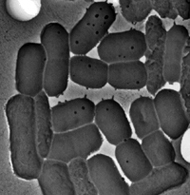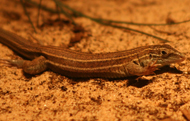Sex and evolution
Why did sexual reproduction evolve? And why is it so widespread? These questions have intrigued scientists for a long time.
Watch the animation above to explore one of the most popular theories for why sex is so successful and discover what advantage it offers over asexual reproduction. (Animation by Easy Tiger)
From a biological perspective, the purpose of life is to reproduce and pass your genes on to the next generation. Organisms have evolved many different strategies to maximise their chances of doing this. But there are just two basic methods of reproduction: asexual and sexual.
Differences between asexual and sexual reproduction
Asexual species reproduce on their own, by duplicating. The offspring is a copy of the parent.
Sex, however, requires a partner. Each individual produces specialised sex cells, called gametes, which usually carry half of their genetic material - one copy of each chromosome (packaged DNA) rather than two. Sexual reproduction involves a male gamete successfully fusing with a female gamete. While the offspring is similar to its parents, it’s not identical and the genes can be mixed in new combinations.
Asexual reproduction is more efficient

Bacteria multiply rapidly by asexual reproduction.
In many ways asexual reproduction is the better evolutionary strategy: only one parent is needed and all of their genes are passed on to the next generation.
All bacteria, most plants and even some animals reproduce asexually at least some of the time.
Sex is less efficient. Finding a mate can take time and energy, and any gametes that aren’t fertilised go to waste. Plus, each parent only passes half of its genes to the offspring.
But despite these drawbacks, sexual reproduction evolved and is abundant within the animal world. Why?
Advantage of sexual reproduction over asexual
One of the strongest theories proposed so far is that sex enables species to keep up with parasites in an evolutionary race.

Some whiptail lizard species exist as all-female populations that reproduce asexually. Without genetic mixing, fatal diseases will probably wipe them out. © Dave Pape
Sex maintains genetic diversity. Having a population with lots of genetic variation increases the likelihood that some individuals will be resistant to a parasitic disease. But as the resistant individuals become more common, the disease catches up and evolves to break through their defences.
Genetic mixing through sexual reproduction quickly gives rise to individuals that are resistant to the new disease strain. These become more common and the race goes on.
In comparison, asexual populations can only evolve resistance to a disease if a beneficial mutation, a random alteration in a gene, arises. These are very rare, so the asexual population cannot keep up with the disease. If the disease is particularly harmful, the asexual population will go extinct.
Some organisms do both

Aphids can reproduce both sexually and asexually, benefiting from the different advantages each method offers.
Some species can reproduce asexually as well as sexually, depending on which stage of their life cycle they’re in, or whether males are present.
For example, for most of the year aphids bear only daughters that have already begun cloning themselves before birth. This allows the population to grow extremely rapidly. As autumn arrives, both males and sexual females are born. Eggs produced by the sexual reproduction of this generation are able to survive the winter. By spring, asexual females start to hatch and the population size rockets again.
This reproductive strategy, where females reproduce asexually, is called parthenogenesis.
Whiptail lizards exist as all-female populations that reproduce exclusively by parthenogenesis. However, in the absence of genetic mixing through sex, fatal diseases will probably drive these species to extinction.
